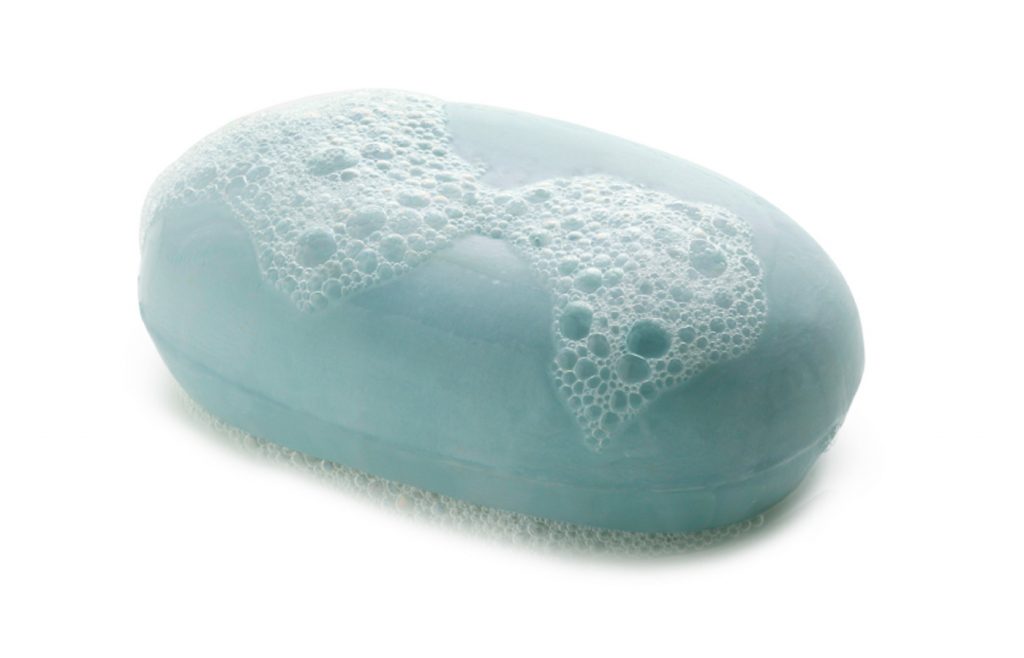
When I was growing up, soap was one of those things that fell in the same category as toilet paper, Band-Aids, and potato chips: you didn’t really care what kind your parents bought, so long as there were some in the house.
However, as I matured, my preferences in bathing supplies did as well. By middle school, I’d snobbishly sworn off generic soaps, and by high school I had begun to seek out products professing “all natural” ingredients. Then, towards the end of 11th grade, I discovered that my best friend, Jennie, was no longer using soap.
“What? Why not?” I demanded, venturing a surreptitious sniff to see if I could detect any olfactory byproducts of this change in her bathing habits (I could not, much to my surprise).
“It’s actually not all that good for your skin,” Jennie explained. “It strips the natural oils that protect against environmentally related aging.”
“So what are you using to get clean then?” I asked.
“Flour.”
“Flour?”
“Yeah, it’s what they did traditionally in India. Totally works.”
I raised an eyebrow. Countries in Southern Asia weren’t often acclaimed for their cleanliness, but the thought that I was speeding down the road to wrinkles with my liberal application of soap was enough to send me straight to the bulk section of Everybody’s Whole Foods that afternoon.
Going Soapless
After a brief mishap with pastry flour (it turns out that the gluten content produces balls of dough on one’s arm hair in the shower), I began a regimen of rice flour-assisted bathing with a zeal usually seen exclusively in crash dieters. Advertizing my discovery to everyone I encountered, I praised the cost-effectiveness and health value of using finely ground grain in lieu of soap. I suspect the bakery-esque scent emanating from my person did little to encourage potential converts.
Unfortunately, the rice flour was not exempt from clotting. After about a week, the accruing dough had reached the size of a small dinner roll, preventing any further water drainage in my shower. After several sighs of consternation, a bottle of Drano, and three gallons of boiling water, I called Jennie up.
“I’m going back to soap,” I told her.
“Why?”
I explained the dough.
“Oh yeah, I had that problem too,” she said. “Um, well, I’m not using the flour any more.”
“Wait—what are you using?”
Jennie hesitated for a moment, then: “Nothing.”
“Really?” I asked, incredulous. “What about . . . the necessary areas?”
“Well,” Jennie said, after a slight pause, “it turns out that there aren’t really any necessary areas.”
And indeed, as I discovered the next day with hot water and forceful scrubbing, she was right. However, as time progressed, two things became clear: the absence of soap pretty much precluded any sort of substantial exercise, and the addition of a morning oil massage (another anti-wrinkle attempt) clashed hopelessly with soap-free bathing: my clothes, having absorbed all the oil that hot showers failed to wash off, had developed an odor akin to musty Mediterranean cuisine.
Liquid Transition
Distraught to discover that even my favorite dress had taken on the faint scent of two-star Italian food, I immediately swung to the opposite bathing extreme: dish soap. Still partial to natural products, I chose Ecover, chamomile scented.
Needless to say, dish soap came with its own drawbacks, and over the next few years I continued to try variations on traditional bathing in search of my holy grail of personal hygiene. Sensitive skin and a tendency to wrinkle my nose at artificial fragrance steered me almost exclusively to “all natural” soap lines.
I dabbled with Dr. Bronner’s, but found that the residue it left remained long after I had washed its Moral ABCs down the drain. I applied a mixture of baking soda and apple cider vinegar and discovered that the only thing I disliked more than the smell of vinegar was smelling of vinegar.
Back to Bars
Fortunately, there’s a plethora of alternatives to conventional soap. For example, one of my female friends swears by Aloha Bay’s Himalyan Crystal Salt Bar. This lather-free alternative uses the gentle abrasion of ancient salts to cleanse skin without stripping its natural oils. My friend also touts the soap’s inherent anti-bacterial properties.
A male friend of mine prefers Juniper Ridge Sierra Cedar soap, made from the spicy-smelling leaves of genuine incense cedar. He enjoys the “invigorating infusion of cedar,” which offers a scent both subtle and rich with warm, woody undertones.
For those inclined towards more than just forest fragrances, Zum offers a variety of bars ranging from frankincense and myrrh to almond. Handmade from ingredients including goat’s milk and coconut oil, these “cold batch, kettle method” prepared bars cleanse and moisturize delicate skin at the same time. One female friend, who swears by the lavender bar, claims Zum soaps are “just the right amount frothy.” In addition, their scent is neither overpowering nor gone with the wind: “It smells really nice, but not like I just sprayed myself with perfume,” she explains.
And for anyone who enjoys all-natural products loaded with personality, Get Real soap advertises “no fake crap,” and tells it like it is. Get Real soaps come free of artificial scents, added colors, parabens, sulfates, and pretty much anything else you wouldn’t want on your skin.
As for me, well, after a recent fling with Avalon Organics hand soap, I’m now testing out a new concoction: raw honey and baking soda. So far, so good. . . .
